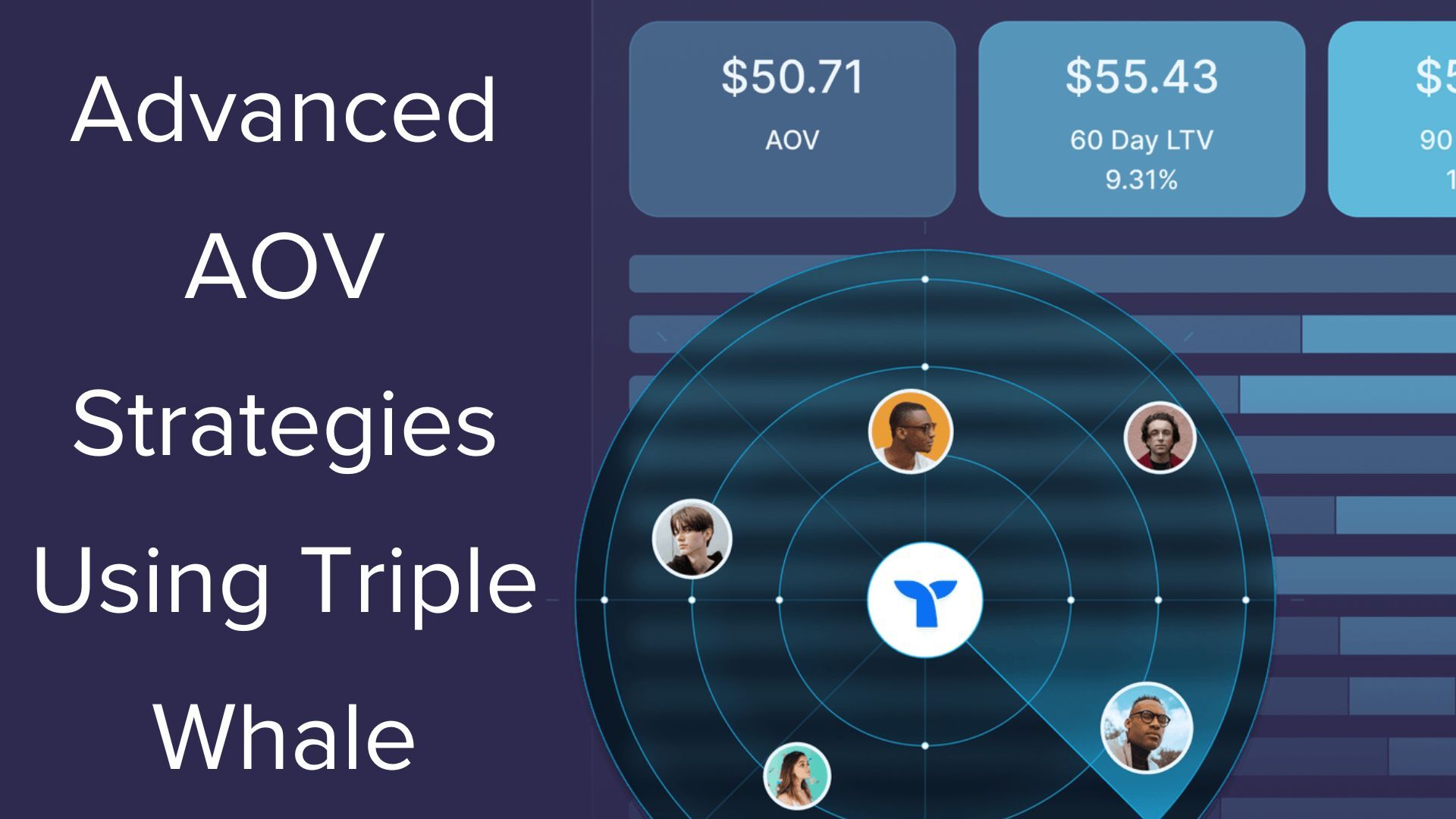How to Evaluate if Triple Whale Can Elevate Your Ecommerce Brand
How to Evaluate if Triple Whale Can Elevate Your Ecommerce Brand
The success of your ecommerce brand hinges on much more than the quality of your products. Data collection and analysis are crucial for optimizing your online sales and surviving in a highly competitive market. As we look towards a cookieless future, the ability to harness comprehensive, actionable insights from multiple data points is becoming both more important and more difficult.
Ecommerce brands are increasingly considering Triple Whale, a comprehensive attribution solution that not only aggregates data from various sources into a single, user-friendly dashboard but also continues to evolve to meet the dynamic demands of ecommerce brands in 2024.
But is Triple Whale worth the price? And how will the features it offers transform your data into actionable insights that ultimately increase sales? With four price options in 2024 starting as low as $100 per month, with custom plans that get more expensive based on the annual revenue of your company, it’s crucial for ecommerce brands to critically gauge which features they’ll need, how to leverage them, and whether or not Triple Whale is worth the investment.
This article briefly goes over Triple Whale’s key features for ecommerce brands and goes into a deep dive of questions you should ask yourself and your team to get a clear picture of how Triple Whale will integrate into your business, if it’s really worth the cost, and the effort that goes into handling all the data it provides.
Overview of Triple Whale
Triple Whale consolidates data from various sources, such as Shopify, Google Analytics, and advertising platforms, into a single, user-friendly dashboard so businesses can track, analyze, and optimize their digital advertising and sales performance comprehensively, all in one place.
By offering actionable insights into customer behavior, Triple Whale gives you the tools you need to create more targeted and effective advertising campaigns. Moreover, Triple Whale stands out by providing detailed comprehensive metrics like Net Profit, Blended ROAS, and New Customer Cost per Acquisition, which is crucial for understanding the overall health and efficiency of advertising campaigns as well as customer lifetime value.
With features like real-time expense monitoring, inventory management, and advanced attribution models, Triple Whale equips ecommerce brands with the tools needed to navigate the complexities of today’s digital marketplace, ultimately driving growth and improving ROI.
Key Factors to Consider Before Adopting Triple Whale
When considering integrating Triple Whale into your ecommerce operations, you need to conduct a thorough review of your brand’s needs when it comes to data analytics, marketing performance tracking, and financial management. Triple Whale is a robust platform designed to comprehensively streamline these aspects of your business, but understanding how its features align with your specific needs is crucial for making it worth the cost.
Current Operations
What specific operational challenges are you currently facing?
Start by identifying the pain points in your current operations. Are there inefficiencies in how you’re tracking sales, inventory, or customer engagement? Recognizing these challenges can help determine where Triple Whale offers solutions.
Where do your current tools fall short in providing insights?
Identify the limitations of your current analytics and reporting tools. Are they offering the depth of insight you need into customer behavior or marketing campaign performance? Acknowledging any shortcomings can highlight how Triple Whale could bridge these gaps.
Do you have a holistic view of your customers’ journey?
How much do you know about your customers’ journeys? If piecing together a comprehensive customer journey is challenging with your current setup, think about how Triple Whale’s integrated data analysis could offer a more complete picture, enhancing your understanding of the customer experience.
Are your marketing efforts yielding the expected ROI?
Evaluate the effectiveness of your current marketing strategies. If the ROI is below expectations, consider how Triple Whale’s insights into marketing performance and customer engagement could help you optimize your campaigns for better results.
Does Triple Whale integrate with your existing Ecommerce platform and marketing channels?
How much time are you currently spending on data analysis? Assess Triple Whale’s ability to integrate seamlessly with your current systems, such as Shopify or other Ecommerce platforms, as well as major marketing channels. Consider how this integration might streamline your operations by eliminating the need for multiple disparate tools and providing a unified, real-time view of your business’s health.
How do you think operations can improve using Triple Whale’s insights?
Reflect on how you will use analytics regarding customer behavior, sales patterns, and channel performance to improve operations, like enhancing the customer experience, streamlining order fulfillment, or optimizing your online store’s layout. Where could Triple Whale help you improve?
Finances and ROI
How effective is your current financial tracking?
Evaluating your current mechanisms for monitoring financial health is crucial. Consider whether your existing tools provide a clear, real-time view of net profit or if they leave gaps in understanding your financial performance. Triple Whale’s capability to offer real-time insights into net profit could fill these gaps.
Are you efficiently managing expenses in real-time?
How are you currently able to monitor operational costs, marketing expenses, and other outflows as they happen? Real-time expense reporting by Triple Whale could provide a significant advantage in maintaining control over your finances, allowing for adjustments to be made proactively rather than reactively.
How could better financial oversight enhance budgeting and forecasting?
Consider how the integration of Triple Whale’s financial analytics might improve your ability to set budgets and forecast future financial performance accurately. The platform’s detailed financial insights can lead to more accurate forecasting, helping you to allocate resources more strategically and plan for growth with greater confidence.
Data and Analytics Needs
Which types of data are most critical to your business operations?
Consider the data that drives your decision-making. Is it sales trends, customer behavior analytics, or marketing campaign results? If precise, campaign-level analytics are imperative, consider how Triple Whale’s detailed reporting might improve your strategy. Understanding the kind of data you rely on will help you assess how well Triple Whale’s analytics capabilities align with your needs.
Can you accurately calculate your blended ROAS?
Understanding the overall return on ad spend across all marketing channels is vital for allocating your marketing budget effectively. Ask yourself if you currently have a method to aggregate and analyze data from various campaigns to calculate a blended ROAS.
Triple Whale’s approach to this calculation could offer a more comprehensive view of your advertising spend relative to revenue, helping you to identify which channels yield the best return.
Would Triple Whale’s consolidated, customizable dashboard help you track these metrics more effectively?
Evaluate how the customization options in Triple Whale’s dashboard can enhance visibility and monitoring of these critical metrics, enabling quicker adjustments and more focused strategy formulation.
Would the benefits of Triple Whale outweigh the costs?
Ecommerce brands need to consider whether the operational efficiencies and revenue growth opportunities identified through Triple Whale’s analytics can lead to a net positive financial impact that significantly exceeds the platform’s expense. Once a brand exceeds $1 million in annual revenue, it typically becomes easy to justify the multitude of benefits of Triple Whale.
Long-Term Strategy For Growth
How can the strategic use of Triple Whale’s features support long-term business growth?
Evaluate how strategically employing Triple Whale’s analytics may not only solve current challenges but also identify growth opportunities, whether through expanding into new markets, enhancing product lines, or improving customer retention strategies. Does it offer the depth of analysis required to understand your customers, optimize your marketing efforts, and make informed decisions that align with your business goals and challenges?
How can you leverage Triple Whale’s analytics to improve inventory management?
Think about how data on sales trends, product performance, and customer preferences can help you manage inventory more efficiently, reducing overheads and ensuring stock levels meet demand without excess.
Triple Whale in Action:
Real-World Benefits for Ecommerce Brands
Cozy Earth
Cozy Earth, a luxury home brand, struggled with accurately attributing sales across various marketing channels due to a slow and inefficient Multi-Touch Attribution system. Turning to Triple Whale, they found a solution that offered advanced attribution models, user-friendly analysis, and comprehensive insights.
Through Triple Whale, they were able to identify previously underutilized channels and optimize their ad creatives for better targeting. By Leveraging Triple Whale’s insights, Cozy Earth experienced a 9.5x increase in ROAS on Facebook ads and a significant reduction in new customer CPA.
Milk Bar
Milk Bar, a popular NYC-based bakery known for its innovative desserts, faced challenges in consolidating data and finding a unified source of truth for their performance marketing.
By integrating Triple Whale, Milk Bar achieved a 4% increase in ROAS and a 7% lift in CPO, thanks to significantly enhancing their understanding of customer shopping habits, purchase frequency, and overall ecommerce strategy.
This strategic shift allowed them to optimize messaging, improve targeting, and personalize customer experiences based on post-purchase survey data, leading to improved performance and growth.
adQuadrant
Internally here at adQuadrant, we faced challenges in accurately attributing customer acquisition sources for their clients following the iOS 14.5 update, which rendered on-platform data unreliable.
By implementing Triple Whale’s Total Impact Model, we could merge click-data with post-purchase surveys to identify undervalued ads and enable strategic allocation of our client’s marketing budgets.
The result was a 45% increase in revenue, a 61% decrease in TikTok NC-CPA, and a 241% increase in YouTube ROAS. Triple Whale’s solution allowed adQuadrant to optimize ad spend, enhance efficiency, and foster more informed long-term strategic planning for our clients.
Conclusion
By harnessing the power of Triple Whale, brands can navigate the complexities of ecommerce with precision, leveraging real-time data to optimize marketing campaigns, refine product offerings, and ultimately drive substantial growth.
However, you need to critically assess Triple Whale’s capabilities to determine if it’s right for you. With its proven track record of empowering brands to achieve growth through improved efficiency and profitability, Triple Whale could be the key to maximizing your brand’s success throughout 2024 and beyond.
About the Author: As the Strategy Lead for Paid Social at adQuadrant, Daniel Shepherd brings ad buying experience across the multitude of social and search platforms with millions of ad dollars managed annually. He loves being a great teammate and learning new skills often. Outside of work, you’ll find Daniel doing the following: swimming, drinking Philz Coffee, lifting weights, reading the Bible with friends or neighbors, dancing, perfecting his fantasy football team, and most of all spending time with his wife and kiddos.




